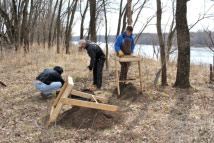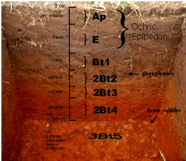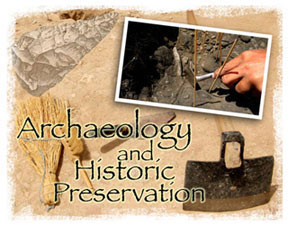|
|
Background Research and Reconnaissance - Phase I
In early 2010, Algonquin Consultants performed a reconnaissance level cultural resources survey of 5mi of 60-ft-wide road corridor proposed for improvement in Ottawa County, Oklahoma, within the jurisdiction of the Quapaw Tribe of Oklahoma.
Algonquin’s level of historic archival research is always designed to address Indian historic era occupation, as well as EuroAmerican occupation, and architecture as well as archaeological sites. For this particular project, we met with the Quapaw Tribes Realty/Trust Services staff to examine allotment maps and ascertain the locations of trust and restricted status lands in the vicinity of the project area. We also examined the archival resources available at the Tribe’s library and museum to develop the cultural context for the project area, as sufficiently detailed information about historic era Indian occupation is often not found in public repositories such as county libraries.
Several WPA-era structures were identified and evaluated for their potential National Register eligibility at a higher  intensity of effort than is customary for a basic reconnaissance project, because of tight deadlines associated with American Reinvestment and Recovery Act funding requirements. We worked closely with the project engineers and with the archaeologist and transportation staff at the Eastern Oklahoma regional office of the Bureau of Indian Affairs to be certain that civil engineering for the project addressed the preservation of these structures.
intensity of effort than is customary for a basic reconnaissance project, because of tight deadlines associated with American Reinvestment and Recovery Act funding requirements. We worked closely with the project engineers and with the archaeologist and transportation staff at the Eastern Oklahoma regional office of the Bureau of Indian Affairs to be certain that civil engineering for the project addressed the preservation of these structures.
As part of the project, Algonquin prepared two sections of the Environmental Assessment (Affected Environment and Environmental Consequences: Direct, Indirect, and Cumulative Effects on Cultural Resources). Our extensive background in the preparation of high quality mapping and graphics resulted in the production of a report with the kind of visual detail both important to reviewers and useful to the Tribe. Algonquin Consultants also provided technical assistance in completing necessary inter-agency coordination so that all parties necessary to the review of the project were identified and consulted.
 In 2010, Algonquin Consultants, Inc. performed archaeological investigations designed to evaluate the National Register eligibility of two precontact sites located along the Neosho River in south central Mayes County, Oklahoma. Evaluation of the two sites was performed under contract to the Oklahoma Department of Wildlife Conservation to satisfy requirements of the US Army Corps of Engineers, on whose lands the sites are located.
In 2010, Algonquin Consultants, Inc. performed archaeological investigations designed to evaluate the National Register eligibility of two precontact sites located along the Neosho River in south central Mayes County, Oklahoma. Evaluation of the two sites was performed under contract to the Oklahoma Department of Wildlife Conservation to satisfy requirements of the US Army Corps of Engineers, on whose lands the sites are located.
The project included examination of deeply buried cultural strata at both sites – through the excavation of several 1.0-m2 test units – and a basic geomorphological assessment of soil profiles and landform development. Based on the depth at which artifacts were recovered at the sites and the characteristics of soil development, the earliest American Indian occupations at these sites almost certainly occurred at the end of the Pleistocene.
Determining the sites’ National Register eligibility, or significance, relied on assessing their ability to satisfy the seven aspects of integrity: Location, Design, Setting, Materials, Workmanship, Feeling, and Association. Research for this Project also sought to demonstrate whether the sites were a likely source of important information. To be eligible for listing  on the National Register of Historic Places, a site must have integrity and demonstrate or strongly suggest that it can yield information that will make it possible to fill current data gaps, to flesh out theories or test alternative hypotheses about events, groups, or processes in the past, to reconstruct a sequence of archeological cultures, or to identify and explain continuities and discontinuities in the archeological record.
on the National Register of Historic Places, a site must have integrity and demonstrate or strongly suggest that it can yield information that will make it possible to fill current data gaps, to flesh out theories or test alternative hypotheses about events, groups, or processes in the past, to reconstruct a sequence of archeological cultures, or to identify and explain continuities and discontinuities in the archeological record.
Understanding the historic context of both sites was also fundamental to the Project’s forming a determination of the sites’ National Register eligibility. A site’s historic context provides the research framework against which the importance of a site’s information can be evaluated. A historic context is the set of coherent patterns and their material referents that are identified when the broad, developmental history of a property and its surrounding area is considered. For precontact sites, such patterns can include those reflecting technological adaptations to the environment or changes in the environment, characteristics of household and community economies, social organization, and religious practices.

 Algonquin Consultants, Inc. offers the full range of historic preservation
Algonquin Consultants, Inc. offers the full range of historic preservation